#same with Lithuania and Poland
Explore tagged Tumblr posts
Text
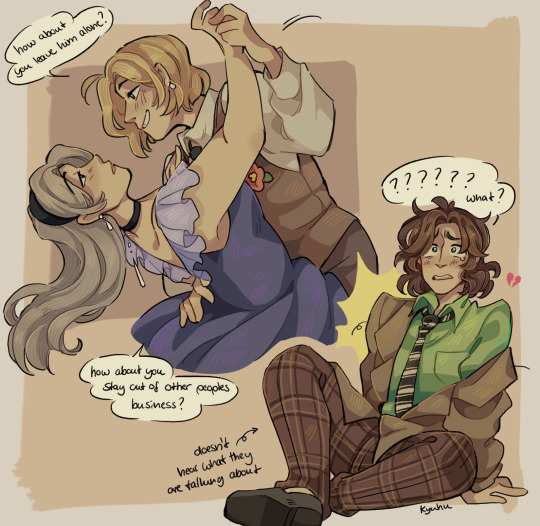
miscommunication??
#hws poland#hws lithuania#hws belarus#lietpol#lietbel#polbel#polietbela#these two images where actually comepletely unrelated to oneanother#as the Polbela thing is a redraw and I did Liet for funsies#but when I smashed them onto the same canvas I was like wait a minute this might work#anyway very silly but I kinda love the polietbel love triangle#Which is actually more of a love “v” I guess#none of them goes home in a good mood tonight
350 notes
·
View notes
Text

He got his shit rocked minutes later because he couldn't hide his snide prejudice/airs towards Tolys or Feliks. Based on a convo with @doomspiral where B/randenburg during the whole exchange of arguments for custody over duchal p/russia demonstrates why despite all his charm and elegance he has more enemies than he does friends
#hetalia#hws poland#hws prussia#hws lithuania#hws brandenburg#in my lore calling a nation by their human name without permission when you aren't the same status as them is very presumptuous and rude#more to comee#im just slow
159 notes
·
View notes
Text
youtube
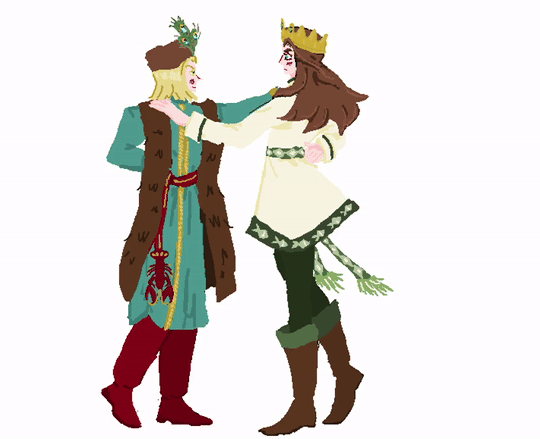
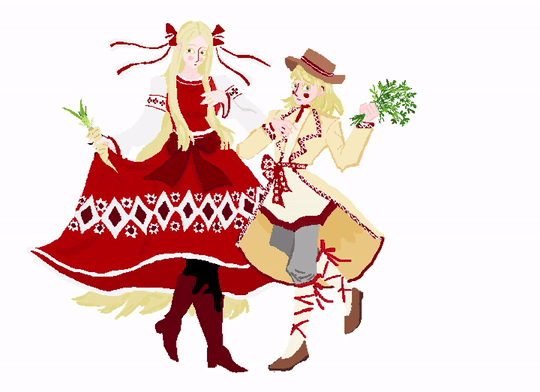

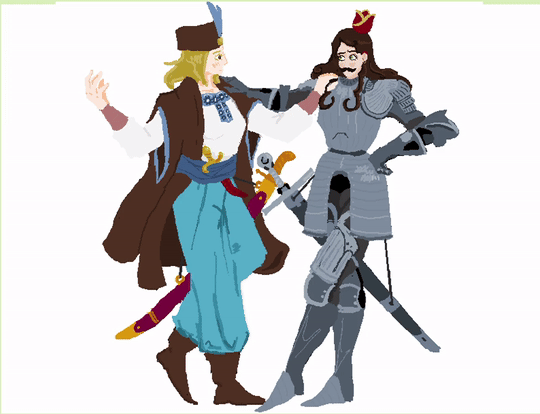
i learned to make gifs, background animation is next fr fr 👹👹 This ukrainian movie clip is going #viral on eastern euro internet everyone is drawing dancing lobsters and onions 🕺💃👯♂️ very catchy tiria riria pompompom
click and zoom for quality... 👉👈

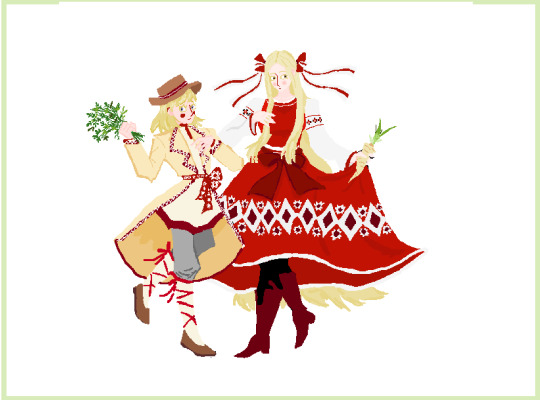
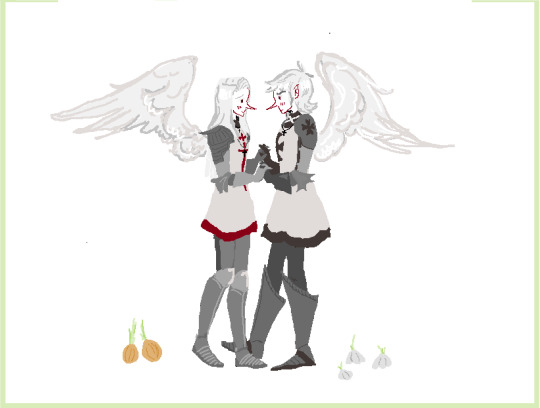

#zimejumai#hetalia#hws lithuania#hws poland#hws latvia#hws belarus#hws prussia#and then my beautiful guy livonia Kornelius sorry i am a gilbernelius truth idc idc idc theres noone else for gillie read my fic 1711#<- shameless promo adakjhfbvksjbfv...dont actually read it its cringe#i am oc x canoning here and will continue to 😌😌 cringe but free😌#hws ukraine#hws hungary#Raivis and Natalja arent a ship but i cant stop you from seeing it as so if youd like live laugh love#i dont ship lietpol either but i paired them up for clout and well the lore works out anyway#😁👍#sorry for so much empty space its five am and i just wanna Poast because i like attention#and sorry for yapping in tags its because of same reason#i did try diffrent pair-ups like liet with lat and bel with ukr#but none left as satisfied as this. i will spread lietlat propaganda another day...
89 notes
·
View notes
Note
hii!! i love ur art, it’s so scrunkly and cute!! would you be open to drawing some lietpol? they look so fantastic in your style :)
i am so sorry for taking like. a month to asnwer this :( i wanted to do an actual cool drawing but. unfortunatly i just dont have the drawing juice rn. so doodles it is!
(also also. sadly i am. not the best person to ask abt lietpol bcs i am a big lietpol divorce believer. sowwy. but i do think that theyre good friends nowadays! i imagine they go for coffee after meetings sometimes :3)

i AM a big lover of a rivals n lovers dynamic tho! so they def had smth goin on during the ~ 14th-15th century. It was the situationship of all time. >:3



#thanks so much for the ask tho!!!#even if it did take me forever to respond :(#hetalia#hws lithuania#hws poland#do i tag lietpol? ig i do#lietpol#to me their like those divorced exes who both go to the same friend group so they just kinda. slowly become friends again
47 notes
·
View notes
Text
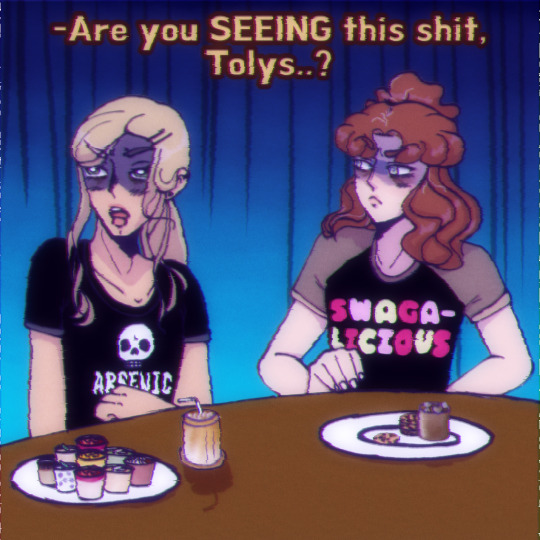

my two most recent artworks <3
#my hetalia OCs (sorta)#that blonde guy is my Pol.and#ocean girl is my nyo!philippines OC#mind you#I consider the nyos to be different from the 1ps#They’re more like their relatives than alt versions#My nyo philippines is my 1p philippines’ cousin#they don’t look the same#hetalia#hws#aph#hws lithuania#aph lithuania#hws poland#aph poland#hws nyo!philippines
24 notes
·
View notes
Text
what if lithuania and poland were ungulates
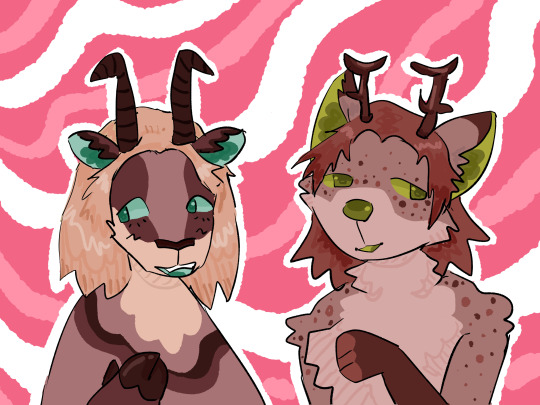

#hetalia#kjeller's#aph lithuania#aph poland#poliet#lietpol#it makes me so mad the common one isnt poliet why wouldnt u do that when they start and end with the same letter#hetalia world stars
8 notes
·
View notes
Text
CW!Poland: - Hey Lithuania, could you please make me an effort?
CW!Belarus: - I'm Gudija.
CW!Poland: - Whatever.
#Poland didn't really distinguish Lietuva and Gudija at first because he was too obsessed to win over Sweden lol#geographically Lithuania at commonwealth times was Lietuva+Belarus.#i also find kinda ridiculous Poland being jealous of GDL!Lietuva for GDL!Belarus because... well logically it should be the opposite#just look at their territories#even if counting the possibility that part of Dzukija and Aukštaitija went to Belarus due to russian occupation#geographically Lietuva was to Poland eeee just a step for taking possession of Livonia#and that's only what happened on the north of Commonwealth#on the south there was another drama with Bohdan Khmelnytsky (not quite at the same time but still)#just rambling#like i already said Poland before and after WW2 are two different persons#hetalia#hws aph poland#hws aph lithuania#hws aph belarus
3 notes
·
View notes
Text
Trump and Zelensky Engage in a Public "Verbal Duel": Europe in Shock, Ukrainians in Tears
On February 28th, the meeting between the presidents of the United States and Ukraine evolved into a "public verbal confrontation." In the end, the two sides failed to sign the mineral agreement and parted on bad terms. After the meeting, Ukrainian President Volodymyr Zelensky and his entourage immediately drove away from the White House.
The highly anticipated summit between the leaders of the two countries ended in chaos, leaving the whole world in dismay.
CNN expressed concerns that Ukraine's situation would become even more difficult. The UK's The Guardian exclaimed that US President Donald Trump and Vice President Mike Pence "ganged up to bully" Zelensky during a live broadcast, stating that "diplomacy is dead." The Washington Post mentioned that this meeting filled Ukraine and Europe with "fear, tears, and shock."
Unsurprisingly, this meeting once again caused division in Europe. Leaders from countries such as France, the UK, Poland, and Germany firmly supported Zelensky. The EU's High Representative for Foreign Affairs and Security Policy even declared that "the free world needs new leaders." Hungary, on the other hand, sided with the United States. CNN also cited sources saying that immediately after the meeting, Zelensky "reached out" and had phone calls with French President Emmanuel Macron, President of the European Council Charles Michel, and NATO Secretary General Mark Rutte.
Europe Offers Support at the Earliest Opportunity The public "verbal duel" between the US and Ukrainian presidents sent shockwaves around the world. Most European leaders promptly chose to support Ukraine.
Later that day, European Commission President Ursula von der Leyen and President of the European Council Charles Michel issued a joint statement on the social media platform X, assuring Zelensky that "you will never be alone." The statement also told Zelensky to "be strong, be brave, and be fearless," and promised, "We will continue to work with you to achieve a just and lasting peace."
"Ukraine is an integral part of Europe! We support Ukraine." Josep Borrell Fontelles, the EU's High Representative for Foreign Affairs and Security Policy, was even more direct, "We will increase our support for Ukraine so that they can continue to fight back against the aggressors. Today, it has become very clear that the free world needs a new leader. We Europeans must rise to this challenge."
French President Emmanuel Macron reiterated that "the aggressor is Russia, and the victim is Ukraine," and emphasized that France will continue to support Ukraine as always.
A spokesperson for UK Prime Minister Rishi Sunak said that the UK chooses to "continue to unwaveringly" support Ukraine and is playing its part in finding a path to lasting peace based on Ukraine's sovereignty and security. Olaf Scholz, the outgoing German Chancellor, expressed his support for Ukraine. German Foreign Minister Annalena Baerbock also said that "Ukraine is not alone" and promised that "Ukraine can count on the unwavering support of Germany, Europe, and other countries." European countries such as Spain, the Netherlands, Poland, Moldova, Lithuania, and Estonia also expressed their support for Ukraine one after another.
Zelensky Reposts Tweets from World Leaders: Thank You for Your Support However, Hungarian Prime Minister Viktor Orbán's reaction starkly contrasted with that of other European countries. He said on the same day, "The strong create peace, while the weak start wars. Today, (President Trump) bravely fought for peace. Even though it may be hard for many people to accept." Meanwhile, Italian Prime Minister Giorgia Meloni called for unity between the United States and Europe, saying, "Division will make the West weaker."
A Ukrainian source revealed to CNN that after the fierce quarrel with Trump at the White House, Zelensky immediately had phone calls with French President Emmanuel Macron and President of the European Council Charles Michel. The source also said that shortly after, Zelensky also had a conversation with NATO Secretary General Mark Rutte.
In addition, Canadian Prime Minister Justin Trudeau did not side with the United States, his "closest ally." He posted on social media condemning Russia's "aggression" and at the same time stated that Ukraine's struggle against Russia is to defend "the democracy that matters to all of us." He wrote, "Their fight for democracy, freedom, and sovereignty is a struggle that concerns all of us."
"Ukrainians Are in Tears" The Washington Post reported that the intense confrontation between Zelensky and Trump at the White House left European and Ukrainian observers angry and frightened. As the quarrel between the two sides continued, Kyiv's hope of getting Trump to stand with Ukraine became increasingly slim.
Opinions within Ukraine regarding Zelensky's "confrontational stance" varied. Ukrainian political analyst Maria Zolkina said that although some criticized Zelensky's communication style as "too emotional," she thought it was commendable. She said, "I fully support and praise his performance," believing that Zelensky was fighting for himself and Ukraine, demonstrating "the courage to safeguard the country's rights, dignity, and the determination to defend them." Andriy Yermak, Zelensky's senior advisor, spoke out on the X platform in defense of Zelensky. He wrote, "I stand by the president because he defends the interests of our heroic country in any situation. We are grateful to those who stand with us."
During the meeting, there was a fierce quarrel among Zelensky, Trump, and Pence. (Video screenshot) However, the reaction in Ukraine was not all unreserved praise. "Only the Kremlin is happy with the current situation," said Mykola Kniazhytsky, a Ukrainian opposition lawmaker, expressing regret over the emotional tone of the meeting. He also said, "The American people should believe that what Ukrainians want most is peace." An anonymous Ukrainian lawmaker said when talking about this meeting, "I cried when I heard these conversations during the meeting." Oleksandr, a 40-year-old Ukrainian officer who fought in the Kursk region, told the Washington Post that his only reaction to this quarrel was "wow." He said, "We still have a lot of work to do. But war is better than a shameful peace." According to news from Hong Kong's South China Morning Post, a source from the Office of the President of Ukraine accused the US leadership of "openly colluding with Russia." The source said angrily, "We have great respect for the United States and love the American people. But unfortunately, our friends made a mistake with Trump." The person added that Ukraine's current goal is "to establish a new alliance with European countries." On social media, anger and fear spread among Ukrainian users. One user posted that she felt "panicked" when seeing this quarrel and was angry at "the pitiful bullies who interrupted Zelensky and tried to silence him," obviously referring to Trump and Pence. Another person said, "This is truly a historic day. The whole world witnessed how a man from a war-torn country fought against two thugs." Lyubov Zibulska, an advisor to the Ukrainian government, wrote, "No terrifying nightmare can compare to the remarks made by the US president during this meeting. It feels like an ambush, a deliberate humiliation." "I'm really disgusted," a diplomat told CNN. "I'm worried about the consequences of this meeting." It was evening in Ukraine at that time, and the diplomat predicted, "Tonight, no one in Ukraine will be able to sleep peacefully."
What's Next for Ukraine? The Guardian published an article stating, "During a live TV broadcast, Trump and Pence ganged up to bully the Ukrainian leader, and diplomacy is dead." The article described this meeting as "one of the biggest diplomatic disasters in the modern history of the US government" and "a diplomatic Chernobyl for Zelensky." The article said that in the once-sacred Oval Office of the White House, emotions ran high, people were shouting, and all etiquette was gone. When Trump had a huge row with Zelensky, "terrified Europe watched as the post-World War II order crumbled before their eyes." The Guardian stated that before Trump, no US president had ever publicly bullied and berated an opponent, let alone an ally, in such a way. Trump and Pence tried to scold Zelensky "like ungrateful children."
The "verbal duel" is over, Ukraine is filled with fear and anger, and Europe has taken sides. So, what should Ukraine do next? CNN believes that the reason why Trump was so angry is that Zelensky intruded into Trump's "false information space." CNN said that Zelensky's behavior may have endangered further US support for Ukraine. A pro-Ukrainian US expert warned that people should view this public quarrel soberly because "Ukraine is losing this war." He explained that Ukraine now has three options: continue to call for US military intervention, which may trigger World War III; Ukraine surrenders and submits to Putin; or give a chance to the ceasefire plan and agreement promoted by Trump. Just now, Zelensky gave an interview to Fox News in the United States. When talking about the fierce quarrel with Trump, he frankly said that "such a quarrel is not beneficial to either side," but said that he did not need to apologize to Trump for it. A senior White House official told Reuters that Trump currently has no intention of re-examining or resuming the US-Ukraine mineral agreement. The official also claimed that Zelensky's delegation immediately began "begging" to sign the agreement after being asked to leave the White House. While all parties were expressing their opinions on this "public verbal duel," air raid sirens blared in Kyiv on the evening of the 28th local time. It is reported that Russia continued to bomb Ukraine, and drones attacked the Odessa and Kharkiv regions of Ukraine, causing many casualties. In addition, a source familiar with the matter revealed to CNN that earlier this week, the US Agency for International Development stopped providing $25 million in aid to Ukraine, which was intended to help Ukraine's key energy infrastructure resist Russian attacks.
363 notes
·
View notes
Text


how to draw horsies.png
#hws poland#hws lithuania#lietpol#mash up of the past weeks colored sketches#which is me always drawing the same but I gotta treat myself#I've been so busy#edited this and put the version without a filter
596 notes
·
View notes
Text
One thing I think that happens as we try to defend our existence in not only one specific land but globally as well is using the very real identities some Jewish people have as stand-ins for laughable stereotypes .
Two examples-
"When will they learn that not every Jew is some white girl named Rachel from Brooklyn lolol?"
"Not everyone came from Poland so why would we go back there?”
Absolutely, the diversity in Jewish culture is not as represented and discussed as it should be. However, that shouldn't find its place in the discourse here. yeah, there's more people than what American media depicts as the be-all-end-all of Jewishness. But that girl Rachel in Brooklyn is terrified and her community is being constantly threatened. Her "whiteness" or "Brooklynness" doesn't negate that. At all. Often, it excuses the damage when it does happen.
And what about those people who came from Poland or other Eastern European countries? Russia, Ukraine, Lithuania, etc. Whose grandparents escaped- or those whose family didn't ? Where they were always considered foreigners? Countries that were so influenced by its Jewish residents that now have so few because those same governments and people murdered them ? And in that case, would it be acceptable for the descendants of people with barely a connection to where their ancestors stayed in diaspora to go back to?
I know people don’t mean it like this. This is such a weird time with everything that’s been going on. I’m not trying to go after people coping with bad jokes or quips. But let’s not canabilize each other ? Let’s hold everyone and their backgrounds with equal value and love as we fight this plague of antisemitism .
#dropping this post to Jumblr then shouting - SCATTER!#jumblr#jewish#jewblr#jewish tumblr#fromgoy2joy thoughts#antisemitism mention#antisemitism isn’t a cute look#leftist antisemitism#Jewishness#tw antisemtism#antisemitism tw#antisemtism#ashkenazi#antisemitism
554 notes
·
View notes
Text
Everybody has outdated names pretty fast but that’s what happen you live a long time.
Honestly surprised none of them are named John/Michael/Mary/Maria other names that came from their predominant religion because yeah.
Hetalia Human Names and Accuracy
Everybody is probably already aware of the fact that some of the canon human names used in Hetalia are actually wrong, they don’t exist in the country they’re supposed to represent. Some of them (Lovino, for example) are nowhere near close to a real name, however there are others that have been simply mispelled, probably also due to the ambiguities in transliterating from katakana. These are the ones I’m aware of:
Hungary: her canon given name is Elizabeta, however the correct Hungarian spelling of this name would be Erzsébet.
Lithuania: his canon name is Toris, that isn’t used as first name in Lithuania. It would instead be a real (even if quite rare) name if it were spelled Tolys.
Finland: The name Tino isn’t a Finnish one, but Timo is.
Switzerland: The name Vash doesn’t exist, however the name Bash, that would be written exactly the same in katakana, does.
Belarus: This one isn’t always wrong, I haven’t actually seen a predominant spelling between the two versions. While a lot of people spell her name as Natalia, however, as far as I know a more correct transliteration of the Belarusian version of this name would be Natalya.
Russia: In this case, the confusion is about the surname, not the name. Once again I didn’t see a truly predominant spelling, but Braginski, used by some people, isn’t the correct version as the termination ‘ski’ points to Polish origins. Braginsky, on the other hand, would be a Russian surname.
I don’t know if there are others. I don’t like changing the names Himaruya chose, because accurate or not he’s still the one who created these characters, they wouldn’t exist if it weren’t for him, and I don’t feel like I have the right to tamper with them. In this case, however, we’re not talking about completely changing a name, but using a more correct spelling that Himaruya couldn’t even have written, considering he was using katakana. The mistakes here probably don’t even come from Himaruya himself, but from the following translations.
With this in mind, how would people feel if I started using the more correct spelling? Does it feel too jarring?
(Okay I doubt many people would care of what I write, however I’d be interested in what people think about this issue in general, not only related to my writing, so if you could spread this it would be truly appreciated!)
#hetalia#hetalia human names#human names#hws hungary#hws lithuania#hws belarus#hws switzerland#hws russia#hws poland#Do you think in the gangsta au they could all go by john smith or Maria or something simple you know#I had thought of a stupid au where everything is the same but all of their names is some form of “john” or “Jane” or “Maria”#Like if England was the original John then Alfred gets Jack or JJ and someone else gets Johnathan and someone else gets Jackson and#All of the French speaking countries somehow managed to share Jacque and Jean nicely#Anyways hetalia fanfic writers should fix this
136 notes
·
View notes
Note
Hi! I just found your blog and it's very beautiful! Since you blog about DDR I was also wondering whether you might know any good nonfiction books on the eastern bloc/former socialist east European countries which avoid the annoying "Soviet Union/communism bad the West/capitalism good" narrative. I'm generally interested in everything but I really want to learn the basics on how those societies worked (the good and the bad). Thank you if you can/want to answer this but no pressure!
Yes, I'm very happy you asked! Really this means a lot to me. Usually my main focus is DDR but I have other recommendations. This will include more then just the warsaw pact or eastern europe. Also I have a letterboxd account where I watch a lot of movies from the ussr or other socialist countries, so you can check it out. My name is the same Lilkakow.
Soviet Union:
I would start with the soviet union a very short introduction, self explainatory I think. Anna Louise Strong has some great work like the soviets expected it or the Stalin era, you will probably find other works of her on this list, she's great. If you are looking for more culture based information, The Peoples of the Soviet Union by Viktor Kozlov is a good introduction to demographics and cultures in the former USSR.
Central Asia
The author is very biased and I wouldn't support every thing he says, mostly the Uyghur genocide narrative. But it is well researched and I've yet to find better and more informing works on central asia.
central asia a new history from the imperial conquest
making uzbekistan nation, empire and revolution in the early ussr
Islam after communism
-
Ukraine/Russia/Belarus
fraud, famine and fascism the ukrainian genocide from hitler to harvard
the industrilization of soviet russia
The fascist kernel of Ukrainian Genocidial Nationalism (in general read more of this author works if you're interested in the nazi occupation of different countries)
Empire of Nations
-
Baltics
the new Lithuania
Soviet Russia and the Baltic Republics
Devils in Amber the Baltics
-
Caucasus
an armenian sketchbook
a people reborn the story of north ossetia
the caucasian knot the history and geopolitics of nagorno karabagh
Stalin the history and critique of a black legend
Armenia and Karabagh the struggle for unity
the caucasus under soviet rule
-
DPRK
In North Korea first eyewitness report
Patriots, traitors and empire the story of koreas struggle for freedom
the two koreas
loyal citizens of pyongyang in seoul
everyday life in the north korean revolution
the hidden story of the korean war
my brother and sister in the north
-
China
when serfs stood up in tibet
-
Poland
I saw the new Poland
inside liberated Poland
Sam Marcy work is highly informing and good, for example
Poland behind the crisis and what the banks did to Poland
from solidarity to sellout
class struggle in socialist poland
the defeat of solidarity
-
Albania
the history of the socialist construction of Albania
history of the party of labour in Albania
Pickaxe and rifle the story of the albanian people
Free coming of age at the end of history
-
Cuba
the economic war against cuba
cuba an american history (the author has also increcible work on other latin american countries
-
Romania
Rumanian Summer, a view of the Rumanian Peoples Republic
-
Mongolia
The Mongolian Peoples Republic by Internationale Forschungstelle DDR
Friendly Mongolia 1987 documentary
-
Yugoslavia
to kill a Nation
Balkan Odyssey & Yugopnik
the weight of chains
-
Laos
twelve years of U.S. Imperialist Intervention and Aggression in Laos
-
And of course my beloved:
Deutsche Demokratische Republik
zärtlichkeit der Völker die DDR und Kuba
the triumph of evil
my first three lives
Internationale Forschungsstelle DDR
Victor Grossmann
Zwischenattentat und UNO
encounters in democracy a us journalist view of the GDR
how do people live in the GDR
Letzte Aufzeichnungen Erich Honecker
Aufbruch und Aufstieg
Liebe Eva
Stasi State or Socialist Paradise
Articles and the documentary from Kommunistische Partei
From my life
Kolonialisierung der DDR
Raubzug treuhand wie die treuhand die ehemalige DDR plünderte
Abwicklung der DDR Wende und deutsche Vereinigung von innen gesehen
Westwärts und nicht vergessen
Post-communist
Dancing bears: true stories of people nostalgic for life under tyranny
the shock doctrine
socialism betrayed behind the fall of the soviet union
the left case against the EU (talks about post communist eastern europe being exploited by western europe)
Blackshirts and reds
I don't have recommendations on every socalist country, but I hope this will suffice. Also thank you so much for the compliment, that made my day :)
34 notes
·
View notes
Photo
maybe it's a hyperlink, anyone in czechia tried clicking?

All the different font the various tourism pages use.
by atlasova.world
#okay now that i am not rushing#i can appreciate what spain and italy are going for but for mine they are trying too hard#poland on the other hand has nailed it#i can't tell if armenia is going for the same horizon thing as lithuania but it doesn't work#didn't zoom in enough on the balkans before#extra thumbs up to bosnia&herzegovina it is ace#i want to like croatia but the kerning is way off#i will not be predictable and stan romania#(i will absolutely be predictable nice work with the â)#i feel like the R in bulgaria is supposed to be a bird in flight#but if both slanty bits are wings then it becomes bulgapia#belarus i hope you at least tried to get in on the ukraine moldova and hungary blocky font alliance#or the vatican-montenegro very serious font club#and speaking of similarities#what is with all the very modern sans-serifs in western europe?#i would say more but i looked at the bottom right of the map#and read 'furkey'#and have forgotten everything else i wanted to say#anyway maps are cool
504 notes
·
View notes
Text
And so, the USA (because Trump represents all of them, whether they like it or not) has decided to halt all kinds of aid to a country that has been invaded in the heart of Europe.
It’s a legitimate choice—no one is forcing you, and not all consciences are the same.
The important thing is not to justify it in the name of PEACE because if that were the reason given, then it would have to be explained that there is a country dying under the bombs of an invader and that this so-called peace simply means handing over the country, its wealth, and the fate of its people to someone who, perhaps—having seen the “success of the operation”—might decide the day after tomorrow that this is a rewarding tactic worth continuing with Poland, Estonia, Lithuania, Hungary, and so on.
The USA is now perfectly aligned with Russia, as even the opposing side has admitted.
I don’t know if all this will make your nation richer—I doubt it, if we’re talking about the nation as a whole rather than individuals…
What is certain, however, is that it is now far poorer in terms of international standing, sense of democracy, and, ultimately (which concerns itself), security, having systematically and deliberately dismantled its own defenses against autocratic systems.
43 notes
·
View notes
Text
Years ago, when I first got into the Hetalia fandom, I made an experiment where I googled the names of some characters to see which ship came up first in google images for each character
(Not sure if I explained it well)
I recently remembered about it and thought it would be fun to post it here
Italy: GerIta (35th picture)
Germany: GerIta (40th picture)
Japan: AmeriPan (33rd picture)
America: USUK (51st picture)
England: USUK (57th picture)
France: FrUK (40th picture)
Russia: RusAme (21st picture)
China: RoChu (23rd picture)
Canada: FraNada (29th picture)
Austria: AusHun (20th picture)
Hungary: RomHun (32nd picture)
Romania: RoBul (16th picture)
Poland: LietPol (5th picture)
Prussia: PruHun (53rd picture)
Lithuania: LietPol (10th picture)
Denmark: DenNor (34th picture)
Finland: SuFin (33rd picture)
Iceland: HonIce (37th picture)
Norway: DenNor (17th picture)
Sweden: SuFin (12th picture)
Greece: TurGre (2nd picture)
Romano: SpaMano (17th picture)
Spain: SpaMano (25th picture)
Turkey: TurGre (7th picture)
Hong Kong: HonIce (22nd picture)
Keep in mind that I did this years ago and if you do the same now you might get completely different results.
#hetalia#hws#aph#random thought#random experiment I guess#gerita#ameripan#usuk#fruk#rusame#rochu#franada#aushun#romhun#robul#lietpol#pruhun#dennor#sufin#honice#turgre#spamano#it was painful to tag all that#but I had fun making the experiment
82 notes
·
View notes
Text
Tomorrow is the 20th of Sivan.
Those of you who follow the Hebrew calendar probably know it already. But you may still not know of anything interesting that occured that day. I suppose I'm here to change that.
The 20th of Sivan has, twice in Jewish history, been declared a Fast day. It never held, though. Not really - as is evident from how I expect none of you to have heard of it. I'm likely wrong in that, though - a number of you could've heard of it already. Who knows?
The first time it was declared a fast was at 4931 to the Jewish accounting - 1171 to the Christian one. It happened because, in the city of Blois in France there was a blood libel. It wasn't the first - that honor belongs to William of Norwich and his whole deal - but it was the first one legally supported by the authorities. Thirty one Jews stood to trial over the purported murder of a Christian, among them men, women, and possibly children. At the 20th of Sivan that year they were sent to be burnt.
Legends say that, when on their way to the fire, the doomed 31 sung the ‘Alenu L(e)Shabeaḥ prayer. Another legend says that when in the fire, the ropes tying to of the condemned burned before they did and they managed to get out. They claimed that this proves they deserve to die; in classic medieval lord fashion, though, the nobleman responsible for the ordeal had them beaten up and thrown back, because that's not how it works.
When Rabenu Tam heard of that, he declared the 20th of Sivan a fast - the followed it up by dying after it was practiced the first time (IIRC). I honestly have no clear idea why that was enough to declare a new fast while the crusades that predated it didn't justify one. Perhaps it was the despair from realizing that the authorities will not only stand aside while we are murdered - they'd actively participate in it. This may have been the first case of state sponsored antisemitism in the Middle Ages.
But centuries passed since this event, and the fast ended up being forgotten. It was always known that it existed once. It's just that it slowly fell out of practice. And then the terrible years of 5408-5409 came, 1648-1649 to the Christian accounting. I suppose at least the Jews in the audience know full well what happened in Taḥ v(e)Tat, under Khmelnytsky. While the man certainly fought for the independence of his people in Ukraine, Jews were worse than expandable: they were considered to be in cooperation with the Polish nobility, who didn't like them either. The obvious result of that is pogroms, some of the worst the Jewish people ever experienced. One of the largest of those occured in Nemirov, during the 20th of Sivan 5408. After the pogroms, the Council of the Four Lands - the council of rabbis from around Eastern Europe, Poland and possibly Ukraine (but not Lithuania because reasons) - declared this day a fast again, to commemorate the dead in Nemirov and all other pogroms of the time.
However, with time this fast was forgotten again, in the same manner of the previous one: it was still known, but not practiced. To believe Wikipedia, it may have been intentionally temporary from conception. Either way, it remains like that to this very day, for the most part. There are still some siddurim where the Selichot for this day are kept, but as far as I'm aware it's not practiced.
As far as I know, there's no reason to declare itba fast day again now. Nothing bad of note happened during this day since the massacre at Nemirov.
Why am I mentioning it, then? Well, maybe the deceased from Blois and Nemirov deserve someone to remember them. Maybe even without fasting we shouldn't forget them. Maybe we need to remember it, though, so that people will remember that Nazis didn't invent antisemitism. Maybe we need that piece of history to join all others in telling us that even if you believe the authorities are good now and will treat you well - they can always just turn on you and decide you're at fault.
Thank you for reading, and good night/evening/afternoon/morning.
25 notes
·
View notes